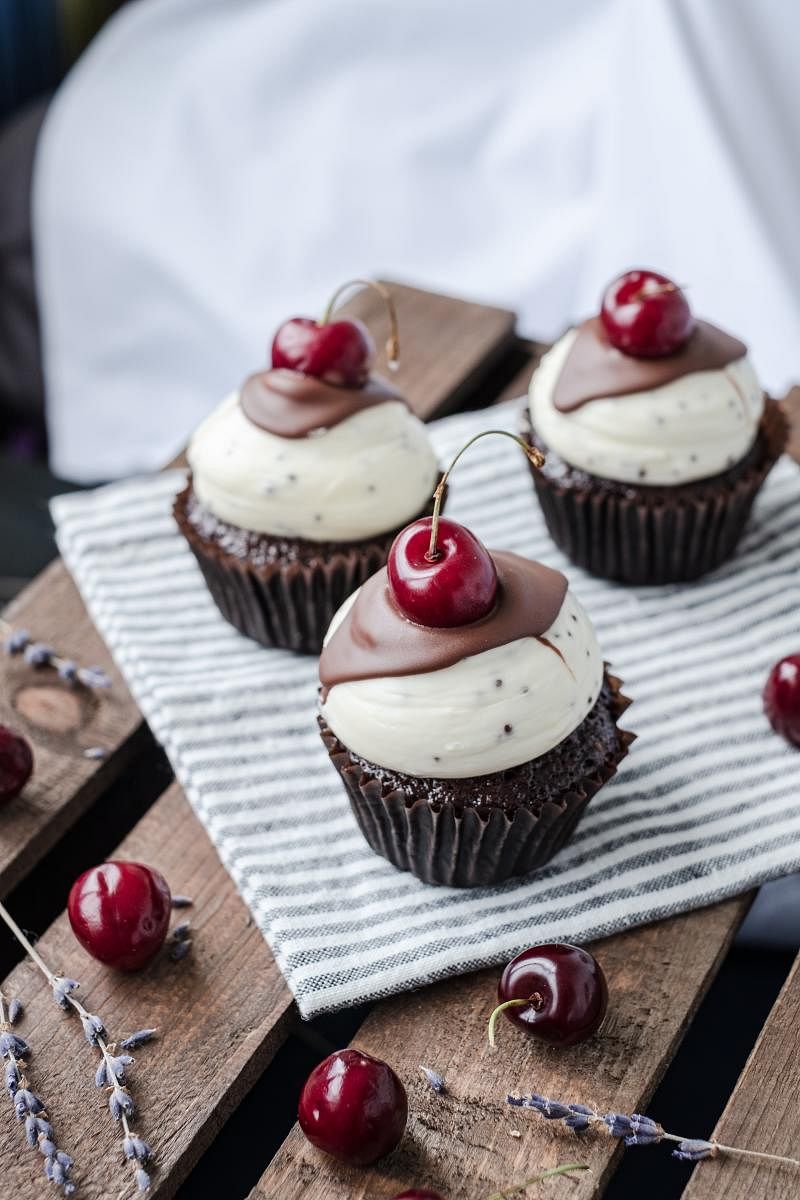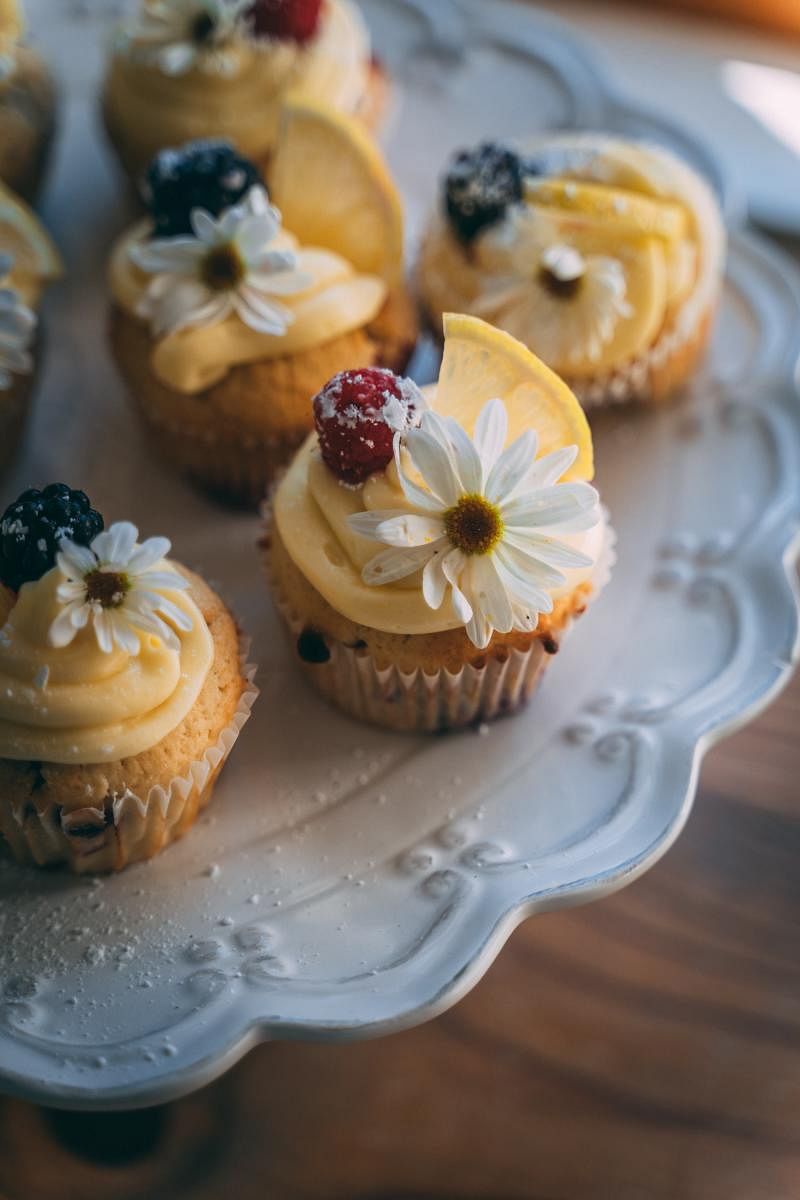

Cupcakes are cute, delicious, fun to make, guilt-free (c’mon, it’s pre-portioned) and can pander to any whim, fancy or otherwise. That perhaps explains why in the past few years, cupcakes have managed to earn such a vast fan following — not just among chefs (pastry ones included), but beginners, homemakers, influencers and even brands who have filled the shelves for premixes. In fact, for most of us, they have become the go-to dessert of happiness to be indulged in anytime. And for good reasons too.
To start with, cupcakes, unlike cakes, whose mini-mes they are believed to be, do not follow any measuring rules. By rules, I just don’t mean in terms of the size —the dainty ones are preferred given that cupcakes originated the same time as corsets — but also in their making. In fact, some of the classics in this category including the 1828 version made by baker-author Eliza Leslie, who coined the term ‘cupcake’, was designed on the 1234 number (she added a 5) concept that the cupcakes evolved in the 17th century. The recipe, which appears in Leslie’s Seventy-Five Receipts for Pastry, Cakes, and Sweet Meats, called for five eggs, two large teacupfuls of molasses; two teacupfuls of brown sugar, one cup of milk, five cups of sifted flour, half a cup of allspice, clove and ginger. The easiness of the recipe coupled with the liberty to add and interchange new ingredients not only made cupcakes a quick adopt among homemakers, it gradually revolutionised the way cakes were presented across the world. Take for instance the Parsi Mawa Cake. Based on the tradition of teatime cakes, the Irani restaurant speciality was inspired as much by the Persian Kumas — a teatime favourite made of semolina, rose water, saffron, dry fruits and cardamom — as it was with the idea of the cupcake. In fact, the idea of having your own no-share cake was the big pull that added to the cupcake popularity even in India, a country that was warming up to the concept of cakes back in the 50s. Impressively, it was also the no-rule aspect of cupcakes that gave them the big break in the business market. Faced with the Great Depression and the two World Wars, people turned to the idea of cupcakes for a chance at instant happiness (and gratification) through sweet.
It was around the World War that cupcakes made their first commercial debut with the food company Hostess. Story has it that soldiers were welcomed back from the front with the hostess’ mass-produced cupcakes, which in the war iteration was a classic vanilla-molasses flavoured treat. Introduced eventually as a snack-time treat, Hostess’ cupcakes by the end of the Second World War had developed into a far decadent treat with a chocolate icing, vanilla crème filling aptly mirroring the rise of the single-serve as a preferable in-between-meal treat. By the turn of the century, the portable, single-serve treat stood out for its red-carpet glamour and infinite flavour combination.
With that, cupcakes that were already the edible personification of instant joy took a high and mighty stance of an influencer with food brands wielding the magic of a cupcake to sell everything from paper cups to chocolate and even sprinkles. Such was the charm of this decadent yet affordable treat that in 1950 British prime minister Winston Churchill urged confectioners to upgrade the icing sugar on cupcakes. The reason behind this many believe was Churchill’s own liking for the treat; for others, it was the obvious popularity of cupcakes that had turned these Fairy Cakes — a British nomenclature for cupcakes thanks to the classic white glaze on top — into an economist jargon. However, it wasn’t the 1950s but the early 2000s that became cupcakes’ year of fame, thanks to its multiple appearances of the delicious single-serve in sitcoms, reality shows (MasterChef’s especially) and movies — whether it was in the Bridesmaid where the character of Annie bakes a cupcake to boost their morale, Sex in the City where Carrie and Miranda are enjoying vanilla cupcakes topped with pink vanilla buttercream frosting and a sugar daisy or in Despicable Me, where Gru’s cover-up is a cupcake shop. The social media had its own contribution into turning cupcakes into a celeb that could fit into a variety of roles, from rainbow colours to red-velvet, gluten-free to unicorn, even turning them into cupids of love. Cupcakes, this time, however, wasn’t presented merely as a rising food trend that drove the F&B business but as these amazing canvases that could mirror thoughts, aspiration and most importantly feelings. In fact, in the world of portable sweet treats, the single-serve became the treat that could work more on moods instead of measurements and still could give you an instant gratification of having something beautiful and handmade.
What gives cupcakes that edge? The foundation. Cupcakes were designed on the same basis as art and music were. They are pieces of indulgence, hence the higher quantity of fat and the layer of taste embellishers — aspects that not only works on the taste but also soothes the senses making one more reciprocating to a thought or an idea. In practice, it is much like a hug. And to ensure it does exactly that, it came in a cup.
(The author is a seasoned pastry chef.)